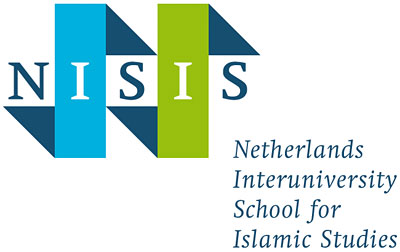Agenda
Call for Papers: ENIS Spring School 2024
THIS CALL WAS CLOSED ON MAY 1st.
We don’t accept any registrations received after the closing date.
Peripheral Islam: Muslims on the Geographical, Normative, Political and Religious Margins
When picturing the mainstream of Islam, many people will think of Arabs from the Middle East. While the latter area is clearly the first region in which Islam spread, seeing it as central is somewhat problematic since the overwhelming majority of Muslims do not actually live in the Middle East, but in “peripheral” Africa, Europe, Central or East Asia or the Americas. The same applies to Arabs: although the Arabic language is undoubtedly central to Islam, most Muslims speak Persian, Urdu, Pashtu, Turkish, Malay, Indonesian or a host of other languages “on the margins”. Seen in this light, it is doubtful whether the Arab world should actually be seen as central to Muslims worldwide. One could easily make the case that the periphery – in all its diversity – is actually more important from a geographical point of view.
The same dichotomy regarding mainstream and periphery can be discerned with respect to the normativity of Islam. Given the importance of the Arabic language, the presence of holy places in Mecca, Medina and Jerusalem and the long history of centres of religious learning in Arab countries – e.g. al-Azhar in Egypt and al-Qarawiyyin in Morocco – the Arab world also seems to set the tone for and to decide the norms of Islam. Yet this obscures the fact that influential events, thinkers and trends – e.g. the Iranian Revolution in 1979, the Swiss intellectual Tariq Ramadan and the rise of the AK Party in Turkey – often emerge on the margins of the Arab world. This is particularly the case since Muslim communities in the West enjoy much more freedom than in the Arab world (and often elsewhere) and, as such, are freer to express their views than in the Middle East.
The latter aspect is related to another peripheral dimension, namely that of politics. Islamic movements – perhaps particularly those in the Arab world – often move in the political margins. Sometimes this is related to their revolutionary views on the state and their open support for violence – think of al-Qa‘ida and the Islamic State (IS), for example – but in other contexts, more mainstream groups like the Muslim Brotherhood are forced to lead a politically peripheral existence because of their opposition to the regime. Given that Islamist groups may sometimes be the most prominent supporters of reform or the most active opponents of government corruption, their life on the margins actively prevents important voices from being heard in the politics of their countries.
Finally, the juxtaposition between mainstream and periphery can be seen in the differences between religious communities. Although the vast majority of Muslims are Sunnis, this is not always the case: there are clear Shiite majorities in countries like Azerbaijan, Bahrein and Iran, for instance. Moreover, the fact that peripheral Muslim communities like the Ahmadis, the Alevis, the Druze and the Zaydis are numerically small does not make them any less dynamic or interesting. Furthermore, in Muslim-minority countries, such as those in the West, even Sunni Muslims can be in a peripheral position. Not only are they religious minorities in their societies, but issues like discrimination and Islamophobia further marginalise them.
All of these peripheral communities – as well as more general forms of marginality, such as social exclusion, poverty and the North-South gap – throw an interesting light on the development of Islam as a whole. Discussions among Muslims on the margins focus on universal issues such as globalisation, relations with the state and society and technological development. The latter also allows the centre and the periphery – in whatever shape or form – to connect with each other. It goes without saying that the specific local contexts in which these discussions take place play an important role. These can vary from societies in which Muslims are a majority to countries that are overwhelmingly Christian and from states that have long enjoyed their independence to those that have gained their post-colonial freedom only fairly recently, to name just two variables.
In such diverse contexts, identity, belonging and awareness can (and often will) be re-evaluated. Peripheral Muslims in these situations sometimes strive for a type of Islam ostensibly divorced from any local roots – what Olivier Roy calls “de-territorialised Islam” – while other Muslims in the margin seek to create (or re-create) a very local form of Islam, or something in between. Although Muslim communities have been in touch with each other for centuries, of course, processes of globalisation have accelerated this in an unprecedented way, resulting in new discussions, new concepts, new themes, new priorities and new outcomes in the lives of peripheral Muslims.
This Spring School focusses on these results of Muslims living, working and writing in the periphery and welcomes papers that show how, where and why peripheral Muslims – varying from marginalised areas and controversial scholars to ostracised politicians and heterodox sects – have shaped this periphery and have been shaped by this periphery.
Confirmed keynote Speakers
Prof. Monica Colominas Aparicio (University of Groningen)
Dr. Marie-Paul Hille (L’École des hautes études en sciences sociales, EHESS)
Prof. Gary Bunt (University of Wales)
Prof. Wissam Halawi (Université de Lausanne, Switzerland)
Prof. Thijl Sunier (VU Amsterdam, Netherlands)
The European Network for Islamic Studies (ENIS) is a collaboration between the following institutions:
- The Netherlands Interuniversity School for Islamic Studies (NISIS, Netherlands);
- Institut d’études de l’Islam et des sociétés du monde musulman (IISMM, France);
- The Center for Near and Middle Eastern Studies (CNMS at the University of Marburg, Germany);
- El Consejo Superior de Investigaciones Científicas (CSIC – the Spanish National Research Council, Spain);
- Societa Per Gli Studi Sul Medio Oriente (SeSaMO, Italy)


